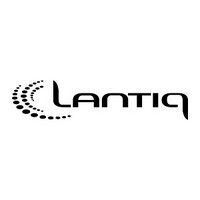ADM6996L-AA-T-1 Lantiq, ADM6996L-AA-T-1 Datasheet - Page 21

ADM6996L-AA-T-1
Manufacturer Part Number
ADM6996L-AA-T-1
Description
Manufacturer
Lantiq
Datasheet
1.ADM6996L-AA-T-1.pdf
(69 pages)
Specifications of ADM6996L-AA-T-1
Lead Free Status / RoHS Status
Supplier Unconfirmed
Available stocks
Company
Part Number
Manufacturer
Quantity
Price
Company:
Part Number:
ADM6996L-AA-T-1
Manufacturer:
INTEL
Quantity:
35
3.12
The Auto Negotiation function provides a mechanism for exchanging configuration information between two ends
of a link segment and automatically selecting the highest performance mode of operation supported by both
devices. Fast Link Pulse (FLP) Bursts provide the signaling used to communicate auto negotiation abilities
between two devices at each end of a link segment. For further detail regarding auto negotiation, refer to Clause
28 of the IEEE 802.3u specification. The ADM6996L/LX supports four different Ethernet protocols, so the inclusion
of auto negotiation ensures that the highest performance protocol will be selected based on the ability of the link
partner.
Highest priority is relative to the following list:
•
•
•
•
3.13
The ADM6996L/LX’s built in memory is divided into two blocks. One is a MAC addressing table and the other one
is a data buffer.
The MAC address Learning Table size is 2048 entries with each entry occupying eight bytes length. These eight
bytes of data include a 6 byte source address, VLAN information, Port information and an aging counter.
A data buffer is divided into 256 bytes/block. The ADM6996L/LX buffer management is per port fixed block number
and all ports share one global buffer. This architecture can get better memory utilization and network balance at
different speeds and duplex test conditions.
Received packets will separate into several 256 bytes/block and chain together. If a packet size is more than 256
bytes then the ADM6996L/LX will chain two or more blocks to store receiving packets.
3.14
The ADM6996L/LX uses a “store & forward” switching approach for the following reason:
•
•
•
3.15
The ADM6996L/LX receives incoming packets from one of its ports, searches in the Address Table for the
Destination MAC Address and then forwards the packet to the other port within the same VLAN group, where
appropriate. If the destination address is not found in the address table, the ADM6996L/LX treats the packet as a
broadcast packet and forwards the packet to the other ports within the same VLAN group.
The ADM6996L/LX automatically learns the port number of attached network devices by examining the Source
MAC Address of all incoming packets at wire speed. If the Source Address is not found in the Address Table, the
device adds it to the table.
3.15.1
The ADM6996L/LX uses a hash algorithm to learn the MAC address and can learn up to 2K MAC addresses. An
address is stored in the Address Table. The ADM6996L/LX searches for the Source Address (SA) of an incoming
packet in the Address Table and acts as below:
Data Sheet
100Base-TX full duplex (highest priority)
100Base-TX half duplex
10Base-T full duplex
10Base-T half duplex (lowest priority)
Store & forward switches allow switching between different speed media (e.g. 10BaseX and 100BaseX). Such
switches require large elastic buffers especially when bridging between a server on a 100Mbps network and
clients on a 10Mbps segment.
Store & forward switches improve overall network performance by acting as a “network cache”
Store & forward switches prevent the forwarding of corrupted packets by the frame check sequence (FCS)
before forwarding to the destination port.
Auto Negotiation
Memory Block
Switch Functional Description
Basic Operation
Address Learning
21
Function Description
Rev. 1.13, 2005-11-22
ADM6996L/LX
Data Sheet













